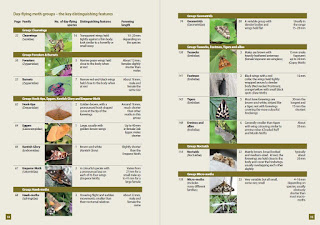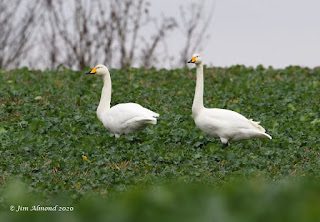The final instalment of WildGuides
book reviews for 2020 could be tailor made for me? My passion for birds has
already taken second place during the summer months in recent years with Lepidoptera
and Odonata occupying a lot of interest. Moths have gradually appeared on the
radar over the years but I have resisted temptation to go down the moth trap route due to lack of time.
My interest in them has been opportunistic, photographing the few Hawk-moth or day
flying species which have come my way in recent years. I’ve lost count of how
many times I’ve tried to ‘freeze’ a Hummingbird Hawk-moth image! Achieving this
and photographing my first Emperor Moths were two of the highlights of 2019.

The 2nd edition of
‘Britain’s Day Flying Moths’, written by David Newland, Robert Still and Andy
Swash was published by WILDGuides in 2019. This new edition brings in several
new species, updates information / design and features positive changes as
suggested by reviewers of the 1st edition. Of the 2,500 moth species
recorded in Britain and Ireland, this book includes 158 species which routinely
fly during the day plus 29 additional but relevant species. The tried and
tested WILDGuides style is evident and makes for intuitive reading. The first
issue the book attempts to resolve is a definition of the title, what is a day
flying moth? Some moths (e.g Cinnabar, Burnet and Silver Y) are obvious day
fliers whilst others are easily disturbed in their habitat and often seen in
flight.
The first 15 pages cover Moth
biology, life cycle, naming, identification and then defines day flying moth
groups based on their family noting their key distinguishing features. For
example, how the moth holds its wings at rest or colouration helps with
assigning to a particular group although some groups only contain a single
species. There are 60 Geometrids and 23 Micro-moths, both sections which are likely
to be amongst the most thumbed pages?
Examples of
where to look for day flying moths are displayed in a photo gallery and eight habitat categories are defined. Over forty
of the species included in the book can be seen in gardens or parkland and the ‘gardening
for moths’ section details many of the key plants which will attract moths to
your garden including larval foodplants.
A glossary heralds the start of
the species accounts which cover 183 pages, accounting for the majority of the 232
pages. Species are covered in taxonomic order only deviating where similar
species are quite sensibly presented on facing pages. Each species has a full
page and English names take precedence and are referred to in the text,
although scientific names are noted for each species header. A standardised box
details the conservation status in Britain and Ireland, where found, when
flying, size, larval foodplant and a reference to similar species. The description details the key
characteristics, behaviour and lifecycle, including usual or interesting
details. For most species, information is given regarding the larva which can
be quite varied in themselves! At least one superb photograph of the moth in its
natural resting pose accompanies the text, (see examples below).

I didn’t realise there were seven
Burnet species, only three of which are common but distinguishing
them, especially the rarities can be difficult! The differences are all small and some are Scottish specialities which will be a challenge to find and identify.
For each moth group, a two-page general
introduction is given which includes the key characteristics of the species it
includes. The Hawk-moth section is one of the shorter ones, including
Hummingbird Hawk-moth and two species of Bee Hawk-moth but also illustrates several
more of our most impressive moths even though they aren’t generally seen as day
fliers. They may be found resting in gardens where I have found two species
myself, so their inclusion for me is justified and completes an overview of the group.

23 species of micro-moths are covered, there
are so many more but those included demonstrate the tremendous diversity amongst
this group which numbers over 1,600! From the Plumes (Brown and White), Yellow
Conch and Small Magpie there are plenty of appealing species to behold plus the
less welcome Common Clothes Moth. I don’t think I ever saw one as a youngster but I
well remember the smell of ‘moth balls’ and curious holes appearing in woollen
garments, the unwanted legacy of their presence in the house!
The final group includes two
recent introductions which are also pests: the Box Moth and Oak Processionary.
These are expanding their range from the south east and could become a serious
nationwide threat to their larval foodplants, which suffer rapid defoliation
and damage.
To help ‘list-minded’ folk like
myself, a summary list of day flying species (p 210-217) is included noting the
likely habitat, flight season (whether found nationwide, north or south), main
larval foodplant and conservation status. I have seen many more day flying
moths than I already have images for and need to take a bit more notice of them
whilst out recording Odonata, Lepidoptera and Orthoptera! Hmm, this list of
insects is expanding somewhat but I am now motivated to find out more via the
final pages of the book which adequately cover recording / monitoring,
conservation and ‘further reading’ / useful websites.
I am sure this book will be invaluable
to all those that wish to know more about these moths and as an introduction to
moths generally comes highly recommended as a must have on the bookshelf or in a backpack!
There is one caveat, do not expect every moth you flush in daylight to be included
in the book, you may need to resort to a full ‘search’ elsewhere for a positive
identification. Be assured, they will be in the minority and my one and only example of
this during the past year was Dingy Footman…
PS Here's the Hummingbird Hawk-moth. I'll upload a Day-flying moth post soon...


















































